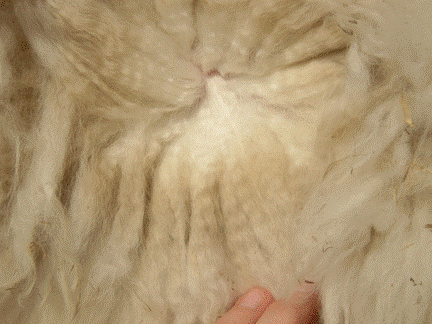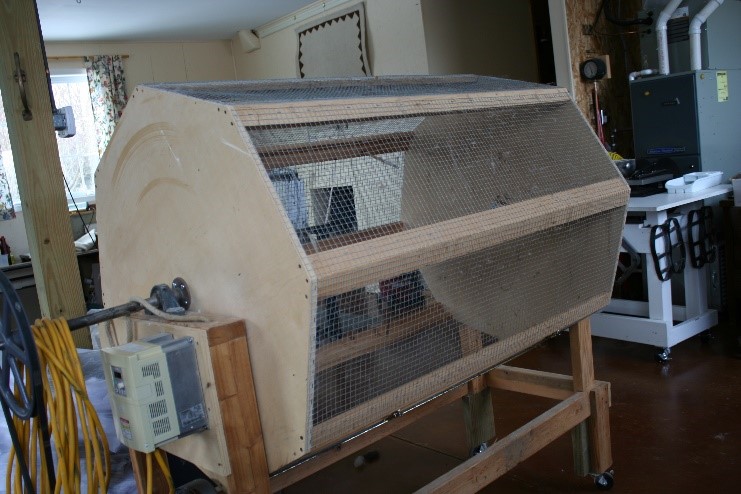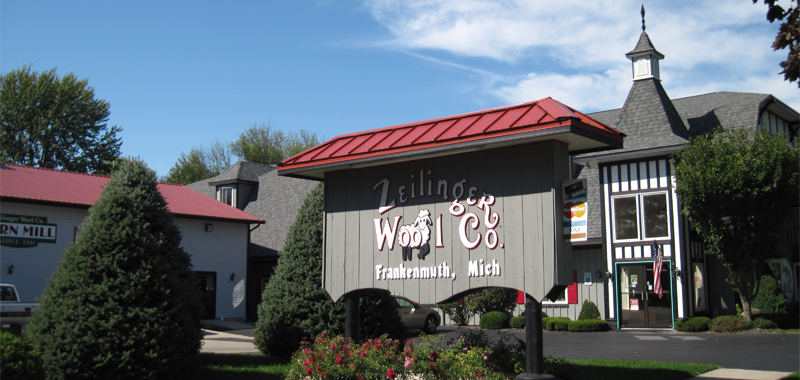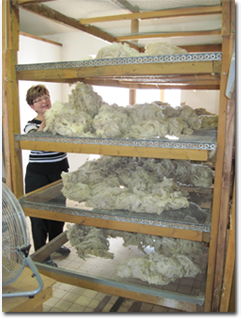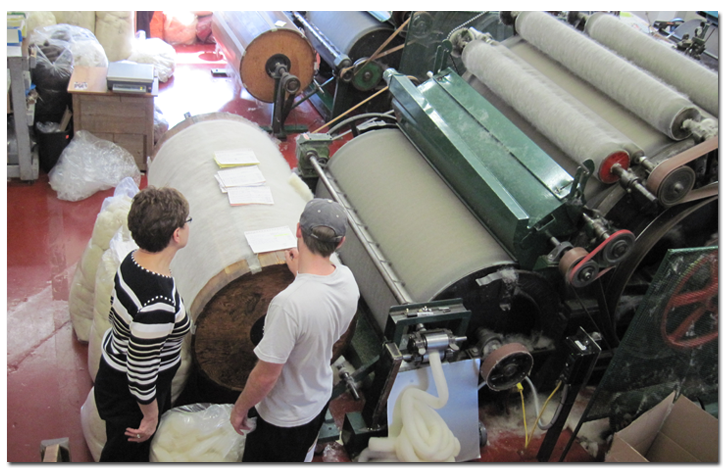The Fiber Mill
Once the fiber is sorted, but before we ship it to the mill, we tumble it in small batches in a big wire drum. We set fans in front of the drum, and as it turns very slowly, the fans blow the worst of the dust and hay out of the fiber. Alpacas love to roll in the dirt. Their fiber is dense, so it’s not unusual for the outer portion to be dusty while the fiber closest to the skin is shiny and clean.
It’s a bit surprising, but their split upper lips are also a factor in the cleanliness of their fiber. Alpacas tend to like the leafy parts of their hay better than the stems. Their split lips give them the dexterity to pick out the parts of their food that they like and throw the rest on the floor of the barn. The result is that there’s often a fair amount of hay on the floor and in their fleeces.
Heartfelt uses Zeilinger Wool, a family-owned business in Frankenmuth, Michigan to process our fiber into batts. Check them out at www.zwool.com.
The first step once the fiber arrives at the mill is that it gets washed with biodegrable powdered soap and natural orange degreaser and then laid out on racks to dry.
Then the fiber goes through equipment that picks the fibers apart to remove any remaining hay, dirt, and other contaminants.
Finally, the fiber is carded. This means that the fibers are all aligned in the same direction. In Heartfelt’s case, the fiber is carded into batts like the one below, but it could also be carded into the fluffy, white rope of roving that you can see coming out of the mill’s equipment below.

